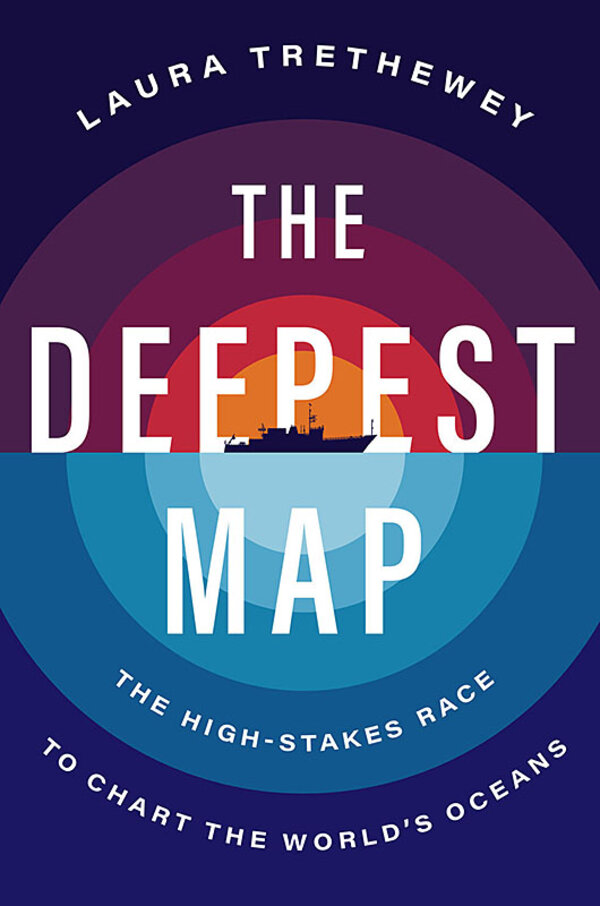If you map it, they will come: The effort to chart the seafloor
Loading...
In 2019, an international team of scientists climbed aboard the ship Pressure Drop and headed to the Southern Ocean surrounding Antarctica. Victor Vescovo, an American adventurer who funded the expedition, had set himself the goal of diving to the five deepest points on the planet’s ocean floor.
It was an ambitious goal, not only because of the significant risks from storms and mechanical mishaps – as was demonstrated in June by the deep-sea implosion of OceanGate’s Titan submersible – but also because so little of the world’s seabed has actually been mapped. How could Vescovo hope to achieve success if the depths of more than three-quarters of the world’s ocean floor were still a mystery? He needed the expertise of Cassie Bongiovanni, a marine geologist with a newly minted master’s degree in ocean mapping.
Laura Trethewey’s “The Deepest Map: The High-Stakes Race To Chart the World’s Oceans” introduces this human-interest story as a way to kick off a much larger discussion about humanity’s changing relationship with the oceans. Deep-sea explorations are opportunities not only to make discoveries, but also to raise warning flags.
“The Deepest Map” is an enlightening and often surprising read, appealing not just to environmentalists or those interested in global politics, but also to travel and tech enthusiasts. As readers will discover, beating at its heart is the idea that preserving our planet starts with getting to know the oceans.
Trethewey journeyed along the California coast, flew to Canada’s Hudson Bay, and went diving in the Gulf of Mexico, as well as interviewed researchers such as Bongiovanni. Trethewey highlights an initiative known as Seabed 2030, which aims to map the planet’s entire ocean floor by 2030. The project involves a consortium of companies, organizations, and universities. The United Nations declared 2021 to 2030 to be the Decade of Ocean Science for Sustainable Development, bringing heightened awareness of seafloor mapping.
In 2019, at the start of Pressure Drop’s voyage, Seabed 2030 had only mapped 15% of the ocean floor at a relatively reliable resolution. Due to an international debate over the borders of the Southern Ocean, Vescovo, the adventurer, made two dives in the area, in an effort to keep his achievement safe from doubt no matter how people defined the scope of that territory.
Meanwhile, the percentage of mapped seascape is growing thanks to crowdsourcing, new deep-water drones, and a willingness on the part of individuals like Vescovo to share information. By 2022, the figure rose to 23.4%, adding an area roughly the size of Europe to the map. While ocean mapping can reveal submerged human history and empower small communities on remote, uncharted coastlines, Trethewey writes, “It’s just the first step in getting to know the ocean, and in a way, it raises more questions than it answers.”
Early on, the author asks: “What happens if we do finish Seabed 2030? We know all too well from the seafaring colonizers of the past that a map is not a neutral tool.” Throughout her travels, Trethewey acknowledges the push and pull between competing forces: researchers seeking scientific breakthroughs; organizations trying to prioritize human, animal, and habitat well-being; and entities bent on plundering natural resources.
This was especially clear to Trethewey at a meeting of the International Seabed Authority, where delegates from around the globe gathered in Jamaica to negotiate rules for future deep-sea mining in international waters. On the one hand, the fact that this U.N.-associated agency is striving to foster some semblance of structure is commendable. On the other, Trethewey notes that the seabed authority is rooted in a substantial conflict of interest: It’s a mining regulator dependent on mining royalties for its operations.
Above all, the author illustrates that while gaining information is a solid goal in and of itself, it’s what humans choose to do with that information that matters most. It’s an intelligent distinction to make, delivered with a refreshing degree of levelheaded curiosity rather than anger or fear.
“Inner soul-searching must accompany outward exploration,” she concludes, “or else we fall into a trap of ticking off new frontiers like an endless shopping list.”









